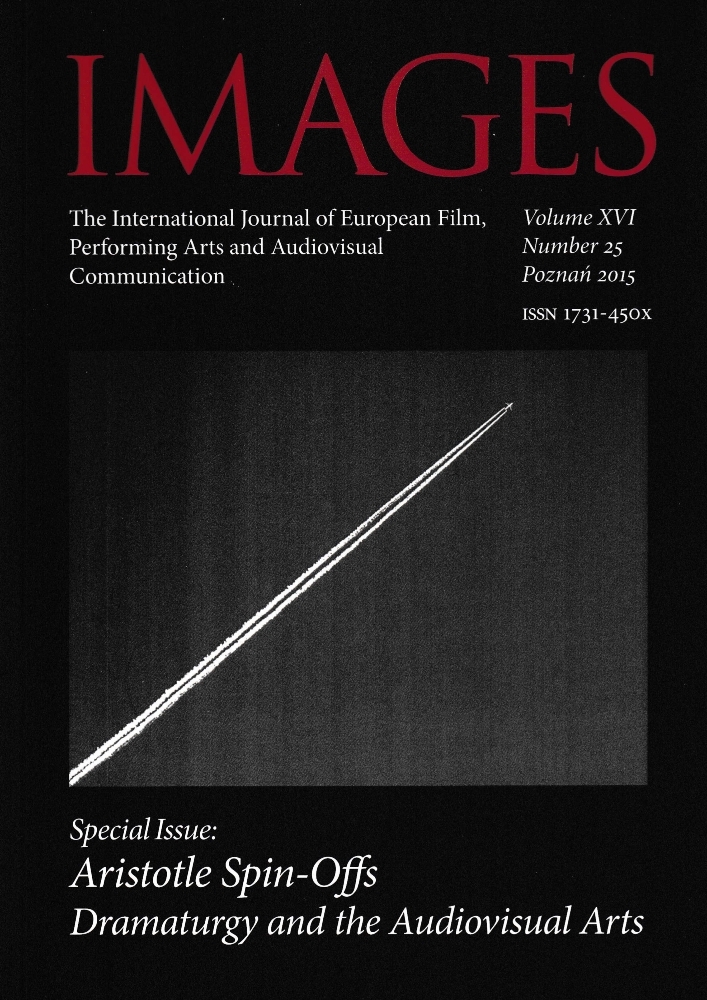Abstrakt
History and Symbols: Lithuanian and Central European Cinema of the 1960s
The text discusses the most creative period in Lithuanian cinema, the 1960s. This analysis is an attempt to frame the artistic and thematic changes in Lithuanian cinema within the context of the changes that occurred in Central Europe cinema during the 1960s. Showing that the cinematic influence of the neighbouring countries of Central Europe was sufficiently strong allows us to show the exceptional nature of Lithuanian cinema in the context of the policies towards the arts in the Soviet Union.
Bibliografia
J. Žalman, Films and Filmmakers in Czechoslovakia, Prague 1968, p. 9.
D. Iordanova, Cinema of the Other Europe: The Industry and Artistry of East Central European Film, London, New York 2003, p. 14.
B. Ingvoldstad, „The Paradox of Lithuanian National Cinema“, [in:] Via Transversa: Lost Cinema of the Former Eastern Bloc, Place and Location: Studies in Environmental Aesthetics and Semiotics VII , ed. Eva Näripea, Andreas Trossek 2008, pp. 137–154.
A.J. Liehm, The Polititics of Culture, trans. P. Kussi, New York 1973, p. 171.
A.J. Liehm, “Filmy pod specjalnym nadzorem. Doświadczenie czechosłowackie”, trans. A. Jagodziński, P. Krauze, T. Grabiński, Film na Świecie 2003, no. 404, p. 54.
Cf. J.Wojnicka, “Kino krajów Europy Środkowej”, [in:] Słownik wiedzy o filmie, eds. J. Wojnicka, O. Katafi asz, Warszawa, Bielsko Biała 2008, pp. 163–171.
A. Streikus, “Pagrindiniai sovietų valdžios kultūrinės politikos bruožai Lietuvoje 1940–1990”, [in:] Lietuvos kultūra sovietinės ideologijos nelaisvėje 1940–1990, ed. J. Romualdas Bagušauskas, A. Streikus, Vilnius 2005, p. 19.
J. Gazda, “Za oknem krzyży”, Kwartalnik Filmowy 2007, no 57-58, p. 242.
Vide A. Mikonis, Poetycki kinematograf. Nurt artystyczny w kinie litewskim, Warszawa 2010.
V. Žalakevičius, Aš nežinau, Vilnius 1997, p. 265.
Cf. Eva Näripea, “National Space, (Trans) National Cinema: Estonian Film in the 1960”, [in:] A Companion to Eastern European Cinemas, ed. Anikó Imre, Oxford 2012, pp. 244–264.
A. Žebriūnas, “Rinkdavausi siužetus, kurie pramuštų lubas ir skristu į begalybę…”, Kinas 2013, no. 4(324), p. 49.
Cf. K. Roth-Ey, Moscow Prime Time. How the Soviet Union Built the Media Empire that Lost the Cultural Cold War, New York 2011 , p. 36.
V. Baskakov, Kak zamorozili kinematograf „ottepieli”, [in:] Kino i vlast’: Sovetskoye kino: 1965-1985 gg., ed. V. Fomin, Moskva 1996, p. 132.
A. Grikevičius, „Didieji apsisprendimai: Maskva-Leningradas-Vilnius-Maskva”, [in:] Epizodai paskutiniam fi lmui. Režisierius Almantas Grikevičius, ed. L. Kaminskaitė-Jančorienė, A. Švedas, Vilnius 2013, p. 57.
A. Shpagin, „Sumerki. Zametki o litovskom kino”, Kinoforum 2008, no 2, p.48.
Vide A. Mikonis-Railienė, “Poezja, mitologia i ideologia. Obraz dziecka w twórczości Arūnasa Žebriūnasa”, Kwartalnik Filmowy 2013, no. 81, p. 151–167.
Cf. P. Hames, Th e Czechoslovak New Wave, London 2005, p. 35.
S. Beauvoir, “Ištrauka iš prisiminimų knygos ‘Viską apsvarsčius’”, trans. Vytautas Bikulčius, Literatūra ir menas 2009, January 9, p 12.
S. Šalkauskis, “Lietuviai -istorinių paradoksų tauta”, Krantai 1989, no. 6, pp.18–30.
M. Liehm, A.J. Liehm, Th e Most Important Art: Eastern European Film Aft er 1945, trans. Kác a Polácková-Henley, Berkeley, London 1977, p. 329.
A. Кonchalovsky, Niskije istiny, Moskva 2000, p. 54.
A. Wajda, O polityce, o sztuce, o sobie, Warszawa 2000, p. 36.
E. Gyertyan, “W oczekiwaniu na nowe kroki Miklósa Jancsó”, trans. H. Kuźniarska, Kino 1977, no. 139, p. 50–51.
M. Janion, “Egzystencja ludzi i duchów. Rodowód wyobraźni filmowej Andrzeja Wajdy”. [in:] Zło i fantazmaty, ed. M. Czermińska, Prace wybrane, vol. 3, Kraków 200, p. 398.
Cf. M. Hopfinger, Adaptacje filmowe utworów literackich: problemy teorii i interpretacji, Wrocław 1974, p. 143.
R. Vabalas, “To chto s nami sdelali,- eto zemliatresenye”, Kinoforum 2002, no. 4, p. 34.
B. Michałek, “Kino Środkowo-Europejskie, kino Europejskie”, Kino 1990, no. 5, p. 13.
J. Kroutvor, Europa Środkowa: anegdota i historia, trans. J. Stachowski, Izabelin 1998, p. 33.
Licencja
Copyright
© 2015 Uniwersytet im. Adama Mickiewicza w Poznaniu
OPEN ACCESS
